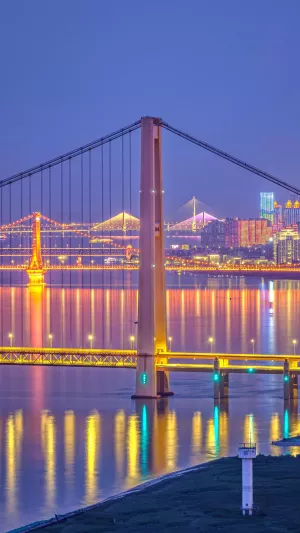Bridges are essential conduits of human progress, overcoming the obstacles posed by wide rivers and rugged terrain.
These architectural marvels serve to connect communities, facilitating the flow of goods, people, and ideas across vast distances.
From simple river crossings to intricate spans traversing valleys and ravines, bridges have evolved in form and function to accommodate diverse transportation needs, including railways and pedestrian pathways.
In urban landscapes, elevated bridges and pedestrian flyovers have become ubiquitous features, seamlessly integrating into the fabric of city life.
Despite their ubiquity, bridges often remain enigmatic to many, their intricate structures comprising main bridge components, foundations, piers, and various ancillary elements. In the modern era, large-scale bridges have undergone significant advancements, with designs becoming increasingly sophisticated to meet evolving quality and aesthetic standards.
Cities rely on bridges as vital arteries, bridging geographical divides and enhancing connectivity. Whether spanning mountains, rivers, or straits, bridges serve to shorten distances and foster cohesion within urban environments.
As societies progress, bridges have transcended mere transportation infrastructure, assuming roles as architectural icons and urban landmarks.
The significance of bridges extends beyond their utilitarian function, encompassing urban beautification and cultural heritage preservation. Bridge designers must harmonize structural integrity with urban planning considerations, ensuring that bridges seamlessly blend into their surroundings while enhancing the visual appeal of the urban landscape.
Consequently, bridges play a pivotal role in enhancing the aesthetic allure of cities, becoming symbols of civic pride and architectural excellence.
Bridges symbolize the ingenuity and creativity of human civilization, merging functionality with aesthetic elegance. They embody principles of harmony, unity, and landscape appreciation, enriching the urban environment with their timeless presence.
Many cities worldwide boast iconic bridges that have become synonymous with their identity, serving as enduring testaments to human achievement and engineering prowess.
From ancient stone arches to modern steel behemoths, bridges encompass a spectrum of architectural styles and historical significance. While some ancient bridges have transitioned from functional to ornamental roles, their cultural and historical value remains undiminished.
Conversely, modern bridges, characterized by towering heights and expansive spans, serve as majestic landmarks and tourist attractions in their own right, contributing to the cultural and economic vitality of their host cities.
Beyond their cultural and aesthetic significance, bridges play a pivotal role in driving economic growth and development. Bridge construction investments stimulate GDP growth, while completed bridges catalyze transportation development, unlocking new economic opportunities and facilitating regional integration.
Furthermore, bridges serve as catalysts for the formation of economic corridors, industrial hubs, and tourism circuits, fostering sustainable development and prosperity in their respective regions.
Bridges represent far more than mere infrastructure; they embody the aspirations, achievements, and aspirations of society. As enduring symbols of progress and connectivity, bridges continue to shape the urban landscape, leaving an indelible mark on the cities they serve and the people who inhabit them.





